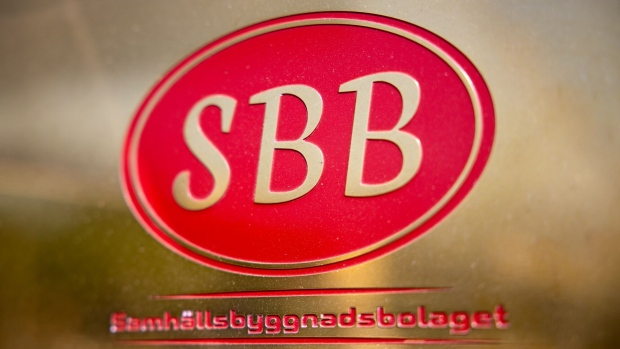Sep 25, 2023
SBB’s CEO Says Swedish Landlord Needs to Raise More Capital: Q&A
, Bloomberg News

(Bloomberg) -- The chief executive of SBB, the company at the center of Sweden’s property crisis, says more capital will be needed despite the landlord securing 8 billion kronor ($720 million) in new funds from a deal with Canadian investor Brookfield Asset Management Ltd.
Samhallsbyggnadsbolaget i Norden AB — as the company is formally known — is scrambling to refinance about $1.3 billion of maturing bond debt by 2025 to avert a funding crunch. The credit rating on its debt is currently classified as “vulnerable to non-payment,” according to Standard & Poor’s. SBB CEO Leiv Synnes spoke to Bloomberg News first after announcing the deal with Brookfield on Sept 24. Comments have been edited for length and clarity.
What happens next?
The company still needs to raise more capital in the coming year to meet our commitments. But the transaction with Brookfield, where the education division repays a portion of its inter-company loan and we make the portfolio a standalone company, is a good step forward and will open up for more possibilities later.
How much more capital is needed?
We will have to come back on the exact details but it is basically a mix of us looking at selling certain properties and possibly taking up new loans. It could also mean that we do an initial public offering or bring in partners for, primarily, our residential properties. So the answer to your question depends on what path we choose and the conditions we get for the respective opportunities we have.
What happens to your portfolio of school buildings?
Through this deal with Brookfield we go down to 49.8% ownership in our portfolio of school buildings, which is called EduCo. That will enable the company to seek funding on the capital market on its own terms. The idea is that we, together with Brookfield, can take up funds on the capital market to add sufficient money to this division.
Will the deal mean SBB gets a better debt profile?
Not in the short-term perspective. In the mid-term and longer out it looks brighter for SBB. I think our credit rating will improve if we get a better balance between liquidity commitments and liquid resources. But we need to do more, we need to get better at the relationship between capital and debt.
Where does the money for the $720 million cash boost come from?
A bank consortium will finance EduCo through the loan market, which will later be taken out by funding in the capital markets. You could say it’s a bridge from banks, and then it will be a capital markets solution. This is a 16 billion Swedish kronor solution for EduCo, which lets it pay back part of its loan to SBB. The rest of the capital will be used to repay existing creditors, primarily Nordic banks. There is a discussion with each bank if it wants to remain in this structure or if they want to be repaid. And of course part of those discussions involve what is most profitable for us and Brookfield.
©2023 Bloomberg L.P.






